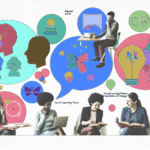
Introduction
In today’s world, understanding special education advocacy is not just beneficial—it’s essential. Advocacy is the empowerment that transforms the lives of children with disabilities and their families. The foundation of successful advocacy lies in knowledge. Therefore, Empowerment through Knowledge: A Guide to Special Education Advocacy serves as both a beacon of hope and a call to action for parents, educators, and community members alike. This guide will explore how understanding rights, resources, and effective communication can empower advocates and positively impact the lives of students with special needs.
The Importance of Special Education Advocacy
Special education advocacy involves ensuring that children with disabilities receive the services and support they need to succeed in school and beyond. Advocates work tirelessly to ensure that students are correctly identified, placed in appropriate educational settings, and provided with necessary accommodations.
Why Advocacy Matters
Understanding the special education landscape is crucial for several reasons:
- Legal Rights: Parents and guardians need to be informed about their rights under laws such as the Individuals with Disabilities Education Act (IDEA) and Section 504 of the Rehabilitation Act.
- Access to Resources: Knowing where to find resources—both financial and educational—enables families to secure the best possible support.
- Building Relationships: Effective communication fosters positive relationships with educators, administrators, and other stakeholders.
Key Concepts in Special Education Advocacy
Understanding the Legal Framework
IDEA provides students with disabilities access to a free and appropriate public education. Familiarity with this law is foundational in advocacy efforts.
| Key Components of IDEA | Description |
|---|---|
| Free Appropriate Public Education (FAPE) | Guarantees students receive an education tailored to their needs, at no cost to their families. |
| Individualized Education Program (IEP) | A documented plan that outlines specific educational goals, services, and accommodations tailored to each child. |
| Least Restrictive Environment (LRE) | Students should be educated alongside their peers without disabilities to the maximum extent appropriate. |
Empowering Parents and Guardians
Successful advocacy often starts from home. Here are actionable steps for parents:
- Educate Yourself: Understanding the rights and resources available to you and your child.
- Document Everything: Keep records of meetings, assessments, and communications with school staff.
- Build a Support Network: Connect with local advocacy groups for additional resources and inspiration.
Effective Communication
Communication is a critical skill in advocacy. Mastering it can lead to productive meetings and collaborations.
Effective Communication Strategies:
- Be clear and concise: State the purpose of your communication upfront.
- Listen actively: Ensure that you understand the perspectives of educators and administrators.
- Stay respectful and professional: This fosters a cooperative instead of combative atmosphere.
Case Studies in Successful Advocacy
Case Study 1: Maria’s Journey to Inclusion
Maria, a five-year-old with ASD, was initially placed in a segregated classroom. Concerned parents pursued advocacy once they learned about inclusive practices. After several meetings with school officials, the family, equipped with knowledge about IDEA, successfully transitioned Maria to a general education classroom with appropriate supports.
Analysis: Maria’s case underlines the importance of understanding legislative frameworks and the potential for inclusive education when advocates are informed and proactive.
Case Study 2: Michael’s IEP Breakthrough
Michael’s parents faced challenges getting appropriate services outlined in his IEP. They documented discrepancies and, with legal guidance, successfully appealed for an IEP meeting where they presented their findings.
Analysis: This case illustrates the power of documentation and the advocacy process in ensuring that the data and evidence align with what’s best for students.
| Advocacy Actions | Outcomes |
|---|---|
| Leveraged legal knowledge | Improved IEP services for Michael and similar cases. |
| Engaged a support network | Broader community awareness and impact. |
Practical Strategies for Empowerment through Knowledge
Resources for Advocacy
- Parent Training and Information Centers (PTIs): Offer free education and resources.
- Local Advocacy Groups: Connect with groups focusing on particular disabilities.
- Online Courses and Workshops: Learn about IEP development and educational law.
Creating an IEP that Works
Developing an effective IEP requires collaboration and a clear understanding of the child’s needs. Tools to help include:
- Pre-IEP Checklist: Gather all necessary documentation before the meeting.
- Goal Setting Templates: Make sure that each goal is measurable and attainable.
Enhancing Awareness and Engagement
Community Involvement
Advocacy does not end in the classroom or the school district. Community engagement is vital. Interest in local school board meetings and participation in community events amplifies awareness.
Leveraging Social Media
Use platforms like Facebook groups or Twitter to share experiences, gather support, and disseminate knowledge. Connecting digitally allows advocates to broaden their reach and support networks.
Conclusion
The journey of advocacy in special education is multifaceted and requires a blend of legal knowledge, effective communication, and community involvement. Through Empowerment through Knowledge: A Guide to Special Education Advocacy, we see that education is power, and educated advocates can change lives. By learning and applying essential advocacy principles, families can pave the way toward brighter futures for their children with disabilities.
Actionable Insights
- Educate Yourself: Commit to learning at least one new aspect of special education law each month.
- Network: Build relationships with other parents and advocates.
- Collaborate: Work closely with educators to develop meaningful, student-centered IEPs.
FAQs About Special Education Advocacy
1. What is the primary law governing special education?
The Individuals with Disabilities Education Act (IDEA) is the federal law that ensures students with disabilities have access to a free and appropriate public education.
2. How can I prepare for an IEP meeting?
Gather documentation related to your child’s performance, educational assessments, and any specific concerns or observations you have. Additionally, prepare questions you want to be addressed during the meeting.
3. What if I disagree with the school’s recommendations for my child?
If you disagree, express your concerns clearly and present your evidence. You can request an independent educational evaluation (IEE) to gather additional data.
4. Are there resources available for parents advocating for their children?
Yes, many organizations offer workshops, resources, and training for parents, such as the National Parent Technical Assistance Center.
5. How can I create a supportive environment for my child at home?
Encourage open communication, establish routines, and celebrate achievements. Collaborating with your child’s educators can also ensure that support is consistent both at school and home.
The path to successful special education advocacy is paved with knowledge. By leveraging resources, engaging in community networks, and fostering positive relationships, advocates can ensure that children with disabilities receive the educational interventions they need to thrive.














